|
In Part 1 we looked at how we create our own suffering, our own drama and our own healing - within our minds. When we forget to be mindful we often blame the Act or Actor (A) for our Consequences (C) - such as emotional reactions. I proposed the idea of the ABC model - where our Beliefs (B) are responsible for our reactions. However, because our Beliefs are often inaccurate, based on old data or old scripts embedded within us, these reactions lead to Drama. In this blog I’ll explore a more in-depth look at how this happens and what we can do to reclaim a moment of power, leading to a re-balancing, away from drama. Between stimulus and response there is a space. In that space is our power to choose our response. In our response lies our growth and our freedom. HOW WE FORM OUR REACTIVE ROLES - TESTING THOUGHTS Psychologists theorise that the ‘personality’ is formed by the time we are four or five as the mind’s primary method to survive, manage and thrive in a world of confusing social interactions and experiences. (others believe the mind remains neuroplastic throughout life). The ‘Persona’ (from the Latin for “mask; character”) is the external face of the ego (who we ‘think’ we are) and it helps us to stay safe from external social and physical harm during this vulnerable period. The persona is made of a set of beliefs, governing the behaviour. We form beliefs through testing thoughts (maybe once or twice) and then believing the resulting observation and feeling "Once you convince yourself of something it is very hard to change your mind. Especially if you've been reinforcing that belief for years!" - Guy Winch EXAMPLE OF MISINTERPRETATION Here’s an example from my life: I noticed sometimes when people pushed me away and I then had this internal thought: “My friends don’t like me,” So I tested: Test 1 = I wanted share something difficult, they told me to piss off. Test 2 = They didn’t like me when I was crying, Test 3 = I asked to play with them and they laughed at me, Concluding (tragic misinterpreted) belief = I’m not likeable and I shouldn’t share or ask for help. FORMING REACTIONS (WITHIN THE NERVOUS SYSTEM) Now we can clearly see the fallacy in that, but if the tests were painful then the belief is formed to protect them from future pain and it’’s lodged in the nervous system. The irony is that the belief just delays and draws out the pain, over a much longer period and it is often based on misinterpretations. The 4 year old me, in the example, may well now form impulsive reactions whenever that thought arises - actions like aggression or crying. This behaviour will affect future interactions - the child hides pain, because of shame, and those actions will in turn get misinterpreted by others. The cycle of miscommunication and reactivity continues. If some key people in that child’s life join the party of reinforcing voices (mum/ dad / close friends) then it’s likely that the unmet needs embed reactivity even deeper, in the following ways:
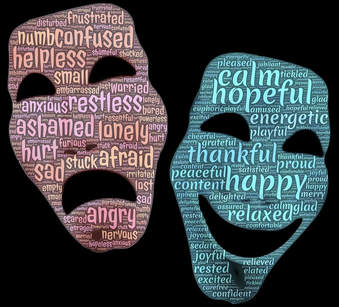 See the mask at play See the mask at play THE PERSONA ISN’T REAL - IT’S MADE OF IMAGES, BASED ON BELIEFS The Greeks wore many persona masks for theatrical roles, as I learned from clowning. For social beings like humans it is essential to have an array of personality traits and masks to protect us and help us thrive in many situations - they are brilliant mechanisms. Though, if we forget that we are wearing one, then we may identify ‘who we are’ as ‘the role’. We become the mask/persona - and we confuse drama as real life, temporarily losing the ability to step back from the role when it becomes overwhelming, especially if we are wearing masks based on ‘faulty’ scripts that have dysfunctional behaviour reactions. If we want to relax these reactions we need to first fully become aware of the mask, realising it’s based on false interpretations and it is not who we really are. "The Roles Are Not Real!" SEEING THE MASKS WE WEAR A useful model to conceptualise the roles within drama is The Karpman ‘Drama Triangle’ - originally conceived by Steven Karpman, based on the Transactional Analysis work of Eric Berne in the 1950’s. These models inform my model, outlined below, which provides a tool to recognising and then transforming the masks we wear, through a process of Enquiry & Empathy to gain ‘Perspective’ (discussed later).To begin let’s look at the three main roles of ‘Drama’ and link them to the internally triggered reactions (which could be any of the TIES; Thoughts, Impulses, Emotions and Sensations) but also look at how the reactions can be directed outwards and then inwards: 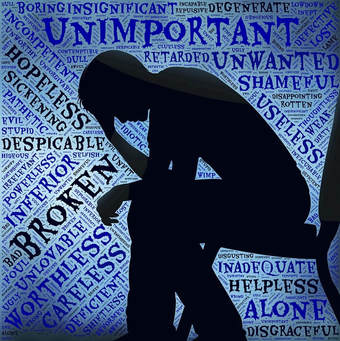 1. Victim Vampire: When we think the world is against us, feel hopeless and cannot see a way forward. We believe that life is unhelpfully happening TO us. This thinking gradually saps our energy - like an energy vampire, or parasite, which is akin to sadness and later, depression. Internally we all have an inner victim, born from our childhood injustices Thoughts are usually blank (as are words), but could include things like “It’s awful”, “It’s hopeless” “The world an ugly.evil place” “I can’t…” “I’m fed up.” Impulses include shallow, quiet breathing with occasional sighs/yawns, retreating away from others/work, tiredness, staying in bed etc. Emotions include hurt, sadness, hopelessness and shame (mixed with fear). This may include flare ups of anger. Sensations: Numbness, but subtle sensations in the eyes/tear ducts, low feelings in the heart and belly. Outwardly, This often begins by seeing the world as working ‘against’ us in some way, and relating in a way that is meek and powerless, which only serves to further dis empower us. We may get angry and move to the Critic role. Inwardly we might just feel terrible and continue with inaction, reinforcing the role. We might feel pity for ourselves and Rescue ourselves, at its most extreme by becoming depressed or suicidal. 2. Condemning Critic: When we see something unjust or that doesn't fit with our beliefs about the way the world ‘should be’ then we might re-actively criticise. On a low level we offer advice from a sense of urgency, need and even panic, which often comes across as ‘condemning’ and persecuting. The high end of the spectrum behaviour could include alienation, oppression or even violence. This can be directed inward or outward too. Thoughts are usually judgmental, defensive or instructive: “Idiot!” “Stop it!” “Get on with it!”“You should/shouldn’t…” “I need to/must…” “You can’t…” “They (other) are wrong and should change…” Impulses include forcing something to stop or change, forming fists and shaking with faster, forceful breath. A sense of needing to do something. Emotions include frustration, exasperation, anger, rage, injustice, offence (mixed with fear). Sensations: Intensity in the fists, jaw, eyebrows, sternum. Outwardly: We name, blame and shame others to get them to change as they remind us of something we hate to see (and perhaps repress within ourselves). Sometimes others get hurt in this process or we see others as victims in some way - then we might switch roles to that of a rescuer. Inwardly: The ‘Inner Critic’ can be a powerful force to motivate us, but when it become ‘condemning’ we begin to blame ourselves and quickly switch back to a Victim or we cover it up with Rescuing, reinforcing the role and proving to ourselves that we need more criticism! 3. Reactive Rescuer Everyone loves a hero and we secretly all want to share in that glory. The rescuer barely stops for a breath and tries to fix things to avoid others from feeling pain. Thoughts are usually appeasing, diminishing or heroic / noble, like: “You’re right!” “It’s not that bad….” “You deserve better…” Impulses include trying to cover something, appease, hold hands up, hug, connect or talk over. Emotions include guilt, pity, embarrassment, anxiety, pride, panic or even sexual arousal (depending on the sponsoring thought) Sensations: Blushing, throat closing, stomach dropping. Outwardly: We get involved in situations that are not our business - we offer advice or reassurance, without it being asked for. We do things for others, without consent. This comes from an energy of fear, guilt and sadness. This behaviour often feeds victim mentality in others. We forget that their pain is ultimately their responsibility - their work. Until they ask for help, or it is obvious that it is needed we only dis empower by rescuing. They may become ungrateful for that, in which case we will become the Critic or Victim again. Inwardly: The part of us that binges and uses addictions to mask emotional discomfort. It prevents us from self-reflection and facing up to the consequences of our actions, because, like the Victim we perceive this as an unjust world, which needs to be fixed so as not to be seen or felt. NAME-BLAME-SHAME Within this concept, whenever our words and actions are governed by an emotional reaction we are expressing from a dramatic role. We judge internally first and then we judge others based on what we suppress in ourselves. Eg. If I interpreted the belief (from when I was younger) “I shouldn’t show off” when I was regularly told to ‘shut up’ then I might learn to suppress it. Then when I observe others acting expressively I might judge them, covering up my own pain by judging them - projecting a false image onto them by: Naming: I give them a label, either negative (eg. Stupid) or positive (eg. amazing). Undue admiration can be a form of rescuing, whilst most negative labels are usually part of... Blaming: I see them as at fault, as wrong, as an ‘other’ (known as othering) - perhaps even an ‘evil’ other. I might feel annoyance and may begin advising as the Critic (eg “They should shut-up!”) or I turn blaming inward, leading to… Shaming: Internally I use my Critic and Victim in negative comparison = “I can’t do that, I wish I could. Outward shaming may also occur from the perspective of a Rescuer (eg. “I need to celebrate this person and tell others to leave them alone!”) or Critic (eg. “I’ll make a joke about them”) OTHERS NEED TO CHANGE Ultimately all roles are based on a victim mentality - believing we live in an unjust world, that is hopeless - a constant, never-ending struggle. When this philophy and the corresponding behaviour is supported by rescuers it becomes a source of small power. We can use victim strategies to get some small needs met. Letting go of that small leverage can seem crazy, even impossible, so we may cling to it, to our identification as a victim and how others need to change, to make us happy. We use othering to forget that we are all similar in this regard. BEGIN WITH SEEING IT - SPOT THE SQUIRREL Alcoholics Anonymous have a saying: “If you spot it you’ve got it”. Once we consciously name what’s really happening we have the power to pause and then act positively. These games of naming, blaming or shaming are ways we get distracted from the reality of the feeling senses. It’s like in the film ‘Up’ when the dog gets distracted by a squirrel. So we simply play a game of ‘Spot the Squirrel’ or ‘Spot the reaction’ that the body and mind has, before we could consciously respond. These could be:
So to begin with see if you can spot the Thoughts, Emotions, Impulses or Sensations of one of the roles and then we can spit the role we are playing and maybe even the role we are casting onto others (including the world around us!) TL;DR
The basics of this are:
In Part 3 I’ll discuss ways in which ‘Presence’ can put us in touch with different roles, which we can influence and choose. Stay tuned, or if you’d like to reduce the drama in your life now, contact me today for a 1-1 session.
1 Comment
LIFE IS PLAY AND PRESENCE I wrote once before about changing the game we play - the drama triangle. I have since reflected upon this concept and refined it, adding useful tools to help us come back to balance and step out of drama whenever desired. I believe that life is ‘play’ - be it a drama, a romance, or a comedy of errors! Yet perhaps it is simultaneously a perfect single moment, when we are in ‘presence’. The processes described in this blog provide ways to remind us of that presence and step back into the moment, any time we choose, using empathy and perspective. “All the world's a stage, And all the men and women merely players; They have their exits and their entrances, And one man in his time plays many parts” OWNING YOUR STORIES We do this with the stories we tell ourselves, which we have interpreted and embodied from years of social interactions (which we call ‘conditioning’). Rational Emotive Behaviour Therapy (REBT) is a type of cognitive therapy first used by Albert Ellis. It focuses on resolving stressful emotional and behavioural patterns, much like the beautiful ‘Work’ of Byron Katie. The goal of these therapies is to help the person reframe their personal truths - changing painful and irrational beliefs into more truthful, kind and rational ones, through the process of self-enquiry. UNDERSTANDING HOW WE DO THAT Ellis gave us the ABC model to show us how simple it is! He recognized that when a single stimulus, or ‘Act’ (A) happens there can be many Consequences (C). For example, a man walks past a crowd, smiling to himself. This simple ‘Act’ results in the following: Observer (1) smiles back at the man, with a sense of happiness. Observer (2) feels offended, and frowns at the man. These different ‘Consequences’ (C) demonstrate that A is not necessarily directly responsible for C. That’s because different individuals have their own subjective ‘Beliefs’ (B) at play. In situations involving the mind (that’s pretty much all observed situations!) the Belief is the cause of the Consequence - because it is the lens we see the world through.
(Observer 2: Thought “He’s mocking me”, Impulse: Frown, Emotion: Anger, Sensation: Tension) ALL DRAMA IS BASED ON BELIEFS Most of our actions in life are based on ‘unconscious’ beliefs, embedded in the body and nervous system. Stress reactions, like in Observer 2, tend to activate the amygdala and reduce the functions of the higher, open and optimistic mind, through the release of cortisol and adrenaline into the blood. So it will be even harder for that person to recognise that a ‘Belief’ within themselves was responsible for the reaction. This means Observer 2 may then blame the ‘Act’/‘Actor’. If we go through life unaware of these beliefs, due to stress, we identify as a role and we get caught in ‘Drama’. If we practice mindfulness we wake up to more consciousness of our thoughts, and we can then exercise choice. So I’ve added a bit to the end to show a way back out through the process of Empathy and Enquiry. D: Drama: the play of scripted roles, which we believe are in ‘society’ but are actually in us. E: Empathy & Enquiry: the feeling into emotions and questioning of our thoughts. EMPATHY AND ENQUIRY
If we challenge our Beliefs in a kind and loving way then we can learn something about ourselves, we can let go of damaging emotions and come to a peaceful understanding and conscious actions. This process would take us back through a reframed alphabet: E: Empathy & Enquiry - pause and ‘feel’ into the emotional reaction. This may require having a SEAT, and listening to the body. Asking it what it is ‘feeling and needing’ (as in the work of NVC) D: Decide - making a choice to ‘Bin it’ (let it go and move on), ‘Bag it’ (record the experience for processing later) or ‘Bring it’ (address this right now). C: Curiosity - the enquiring mind asks: “What am I believing? Is it true?” (Check out ‘The Work’ of Byron Katie). B: Befriend - remember that this is a friendly universe if we act and think it so. This is optimism - creating an optimal outcome through choosing thoughts that are true and feel good. We can start by befriending ourselves, and if we have the capacity, we can befriend the triggering Act (or Actor) This is covered more in Part 2. A: Act/Ask: we can now act from a place of wisdom and love, which often involves asking questions for clarity or to help get needs met. Or a more simple question might be “Would I rather be right, or happy?’ TL;DR That is a lot to remember, but really all you need to remember is:
This is the first part. Next week in Part 2, I’ll show some more techniques to come out of drama by identifying some of the main categories and characters our beliefs take, and then in Part 3 a simple way to change the scripts! Part 4 will go deeper still. Stay tuned, or if you’d like to reduce the drama in your life, contact me today for a 1-1 session. |
AuthorsNeil Morbey is a meditation teacher, group facilitator and inspiration guide for Positively-Mindful.com Blog Index
Archives
May 2024
|
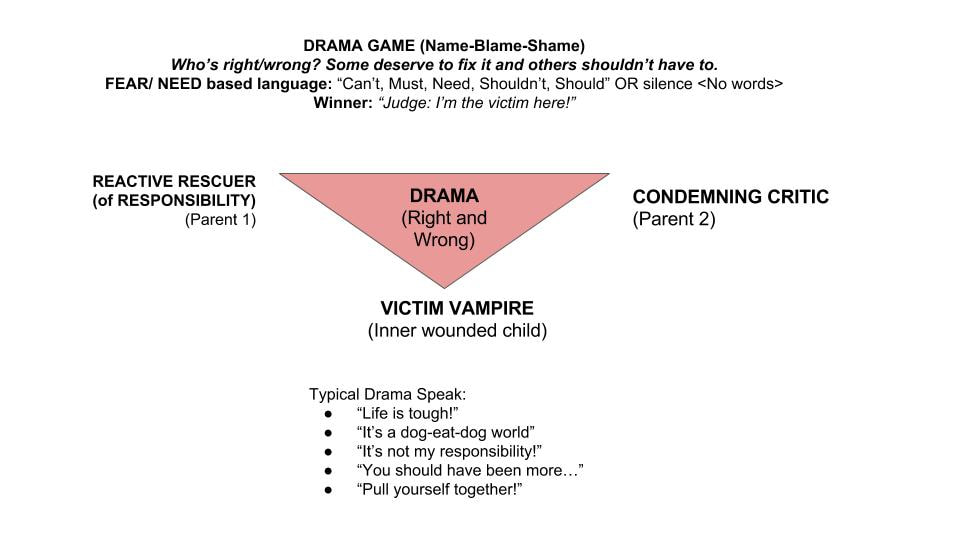
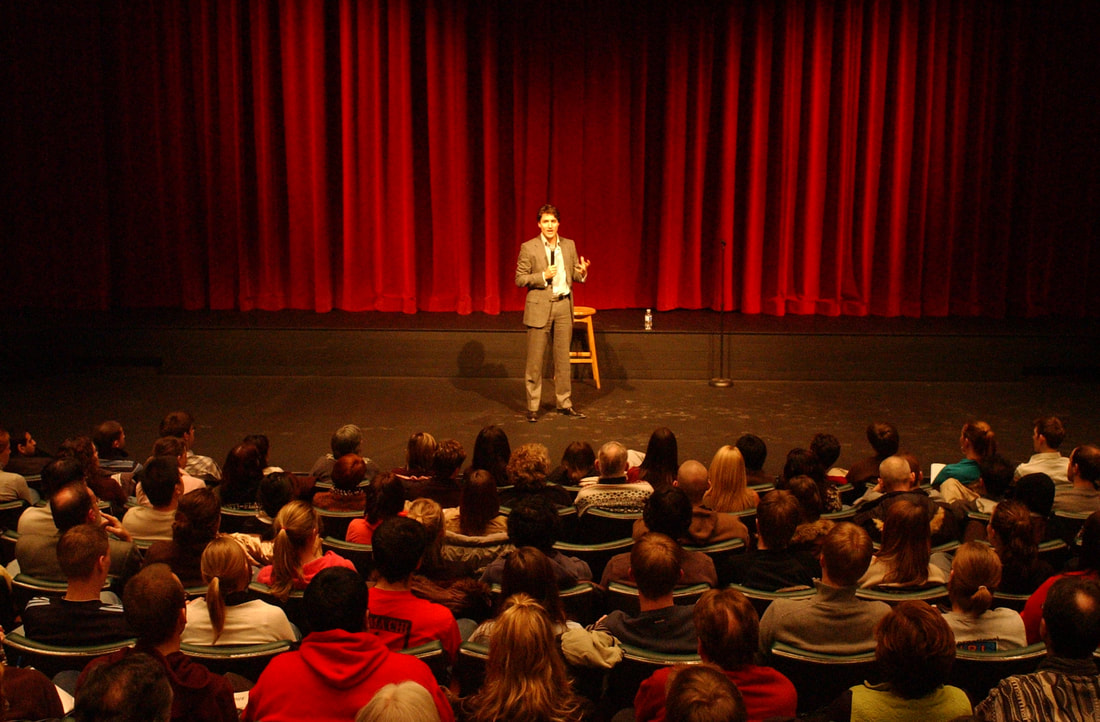
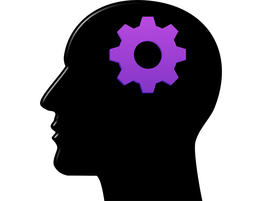


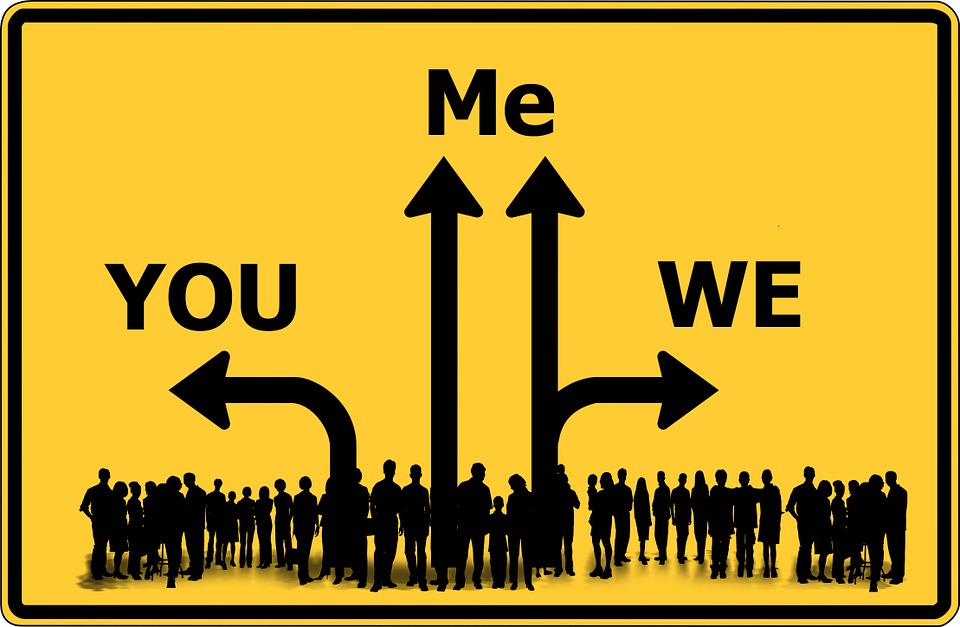
 RSS Feed
RSS Feed